A Complaint for Comedy Central
Have any of you other bloggers noticed that when you try to copy the default code to embed a Daily Show clip, there are always errors and you need to just start throwing in forward slashes until the syntax referee lets it through?
Jon Stewart Has Palin’s Back
This started out slow but had me laughing out loud by the end, so I thought I’d share.
| The Daily Show With Jon Stewart | Mon – Thurs 11p / 10c | |||
| Crazy Like a Contributor | ||||
| Daily Show Full Episodes |
Political Humor | Health Care Crisis |
Fed as the World’s Biggest Carry Trader?
I am not immersed in the data to say whether this is a good description, but it might be. After quoting James Hamilton, Arnold Kling writes:
The Fed is now the world’s biggest carry trader. In Hamilton’s view, the Fed’s huge injection of bank reserves, on which it pays interest, amounts to borrowing from those banks at the short-term rate. It then lends long term in the mortgage securities market.
This is what the Savings and Loans did back in the good old days. They borrowed money short term at 3 percent and made mortgage loans at 6 percent. It worked really well until the mid-1970’s, when interest rates moved up. Those 6 percent mortgages don’t look so sweet when short-term money costs 10 percent.
Long-term mortgage rates are now lower than they were in the heyday of the S&Ls. Taxpayers bore some of the cost of the S&L blowup. We stand to bear all of the interest-rate risk that the Fed is taking.
Have a nice day.
No one knows the future, but it’s interesting that some of us have concluded that the Fed’s actions are going to blow up and yet we are using different ways of reaching that answer. So either we’re all right, and are merely focusing on different angles of the horrendous situation, or we’re all nuts and are erroneously reaching the same wrong answer through mutliple invalid chains of reasoning.
My Objection to GMU Treatment of Growth Rates, Sans Sports Analogy
In a recent post I may have been too clever by half, or even by three-fourths. I thought I had discovered a glaring contradiction in the arguments of some GMU bloggers in their disputes with Keynesians lately. But instead of stating my view plainly, I invented a basketball game between Team GMU and Team JMK (John Maynard Keynes). Let me point out the perceived problem in plain English to make sure my point isn’t lost:
* Some GMU professors have been speculating lately about Samuelson’s famous textbook predictions that the Soviet Union would eventually overtake the US. Brad DeLong tried to defend Samuelson from the accusation that his mistake was due to left-wing bias. DeLong pointed out that using standard mainstream production functions etc., you would expect the poorer Soviet Union to grow at a higher rate than the U.S. (There was other technical stuff too.)
* Bryan Caplan came back and explained that this was very naive, that the institutional structures made a big difference, etc. Here’s Caplan’s summary:
Bottom line: Even on Brad’s charitable interpretation of Samuelson and company, their argument was unreasonably sympathetic to the Soviets. There was never a point in Soviet history when a sensible economist would have seen communism as good for growth in any meaningful sense.
OK so I think Caplan established that a free market economist would have recognized that not only did the US enjoy a higher living standard, but that there was no reason to suppose that that gap would shrink over time.
* Now in an apparently totally different debate, the GMU bloggers were getting in fights with the Keynesians over the effects of social democratic welfare states on European economic growth rates. It’s a long story, but for sure the GMU’ers loved this post blasting Paul Krugman and Matt Yglesias. (Caplan linked favorably to it [I don’t have the link right now], and here’s Russ Roberts calling it a “spectacular analysis.”)
But the irony is that that “spectacular analysis” argues that only an idiot would have thought that European welfare states would grow more slowly than the US. (And so Yglesias shouldn’t be high-fiving Krugman over the apparent empirical finding that Europe doesn’t grow more slowly.) According to the writer, the important thing is the level of economic output, not the rate of its growth. Why? Because (he claims) standard economic growth theory shows that poorer countries tend to grow faster than rich countries, other things equal. So the real issue with Europe, he claims, isn’t whether or not it grows faster than the US, but whether it has a higher or lower per capita income, and whether its growth rate is that much higher than the US’s, given how much poorer Europe tends to be.
Now I’m not saying Caplan was wrong about the Soviet Union, and I’m not saying this new guy is wrong about Europe. What I am saying is that these two positions seem contradictory. When the Soviet Union grew more slowly than the US, the GMU’ers said, “Ha! We knew it! Only you commie lovers would have used the Solow model on a capitalist and a socialist country.” Yet when Europe grew as fast or faster than the US, the GMU’ers said, “So what? Using the Solow model we would expect the capitalist and the social democratic welfare states to show these characteristics.”
Last point: You can argue that the US is a welfare state, not different in kind from Europe. Fair enough. But I don’t think any GMU’er made that subtle distinction.
DeLong on Interest Rates and the Housing Bubble
In a WSJ survey of economists on the housing bubble and Greenspan’s possible role, Brad DeLong wrote:
BRAD DELONG, BERKELEY PROFESSOR: “If you believe that the Fed kept the fed funds rate 2% below its proper Taylor-rule value for 3 years, that has a 6% impact on the price of a long-duration asset like housing. Even with a lot of positive-feedback trading built in, that’s not enough to create a big bubble. And it wasn’t the bubble’s collapse that caused the current depression–2000-2001 saw a bigger bubble collapse, and no depression.”
Although he presumably wasn’t given much space to work with, DeLong doesn’t justify the relevance of his calculation. After all, at face value a drop of two percentage points in the interest rate can have a huge effect on the price of a durable asset.
After the dot-com crash, Greenspan steadily brought down the target for the “federal funds rate,” which is the interest rate banks charge each other for overnight loans of reserves. At its lowest point—from June 2003 through June 2004—the federal funds target was 1 percent, the lowest it had been in about 40 years. So let’s suppose that the rate should have instead been 3 percent. How much of a difference would this have on a very durable asset?
Well, if we simplistically plugged this number in to a standard formula for calculating the present value of an income stream, it would have an enormous impact. For example, if an investor were evaluating an asset that would yield $1,000 in income perpetually, then at a discount rate of 1% it would be valued at $100,000. Yet at the “modestly” higher discount rate of 3%, the asset’s price would collapse to $33,333. In this simplistic example, the artificially reduction of two percentage points would lead to a tripling in the asset value.
Now let’s be fair to DeLong, the guy’s got a Ph.D. in economics. He is aware of the simple formula relating asset prices to income streams and discount rates. Presumably what he had in mind was that the Fed pushed down very short term rates (namely overnight rates), and did this (at least according to the Taylor Rule) for three years. So DeLong could plausibly argue that our calculation above was grossly misleading, since no rational investor would have expected Greenspan (and his successors) to suppress rates indefinitely below their “proper” level.
Fair enough, let’s take a much more realistic approach. Let’s look at what happened to 30-year conventional mortgage rates during Greenspan’s easy-money period. In order to quell the dot-com bubble, Greenspan’s Fed had raised the target up to 6.5% by May 2000. But then starting in January 2001, the maestro steadily cut the target down to a low point of 1% by June 2003, where he held it for a full year.
Mortgage rates fell along with the Fed’s slashing of the overnight target. Now we can’t prove that the one event caused the other, but then again the whole point of the Fed cutting its short-term target is to bring down other interest rates as well. Today, if Bernanke suddenly decided to jack up the target to 10%, I’m sure DeLong would go nuts and warn that this would destroy the economy, including the housing market. Look at this link to see how low mortgage rates were by the time of the housing boom.
So what we’ll do is pick mortgage rates from the middle of the high target rate (“tight money”) period, and then from the middle of the low target rate (“easy money”) period. In August 2000, the average 30-year mortgage rate was 8.03%. In contrast, in December 2003, mortgage rates had fallen to 5.88%. Although it’s not a perfect test, I think plugging in these numbers gives a much better idea of the potency of Greenspan’s policy errors, than the calculation DeLong submitted to the Wall Street Journal survey.
Using a simple amortization calculator, we can see that the drop in mortgage rates makes a huge difference. At a rate of 8.03%, someone who can afford to make monthly payments of $1,000 will be able to buy a house worth a little less than $136,000. But if the rates fall to 5.88%, the person with the same willingness to make monthly mortgage payments can now afford a house that costs almost $169,000. So we see that the apparently modest drop of 2.15 percentage points in 30-year mortgage rates would cause perfectly rational homebuyers to spend 24 percent more on a house.
My point with the above calculation isn’t to make the definitive indictment against Greenspan. All I’m trying to show is that DeLong’s quick arithmetic is a complete non sequitur. The change in mortgage rates during Greenspan’s easy-money period certainly would have the power to kick start housing prices, at which point speculative self-fulfilling (yet unsustainable) prophecies could take over.
Finally, what of DeLong’s point that there wasn’t a depression following the dot-com crash that we now have? Well, as I have explained more fully in my latest book, the reason we are currently experiencing a Great Depression II is that the government has been implementing the New Deal II. It’s also true that there were huge financial crashes–and even worse price deflation–prior to the 1930s, yet with no decade-long depression. It was only when the Fed and government began doing the very things (though halfheartedly in his book) that DeLong currently suggests, that the U.S. economy was saddled with an unprecedented slump.
The Strategy of Nonviolent Resistance
Everyone is familiar with the “I Have a Dream” speech, but I just heard Martin Luther King’s acceptance speech for the Nobel Peace Prize. It’s really good, except that he inconsistently thinks tapping on the federal government is a peaceful solution to political and moral problems.
I thought maybe this was simply an intellectual error on his part, but in another speech commemorating the Civil Rights movement, MLK praised a “Southern president” for having the courage to use the “might of the federal government” to break open the fetters of the Alabama government. Now if Lyndon Johnson were a well-regarded moral authority like the Dalai Lama, then we could still say MLK didn’t see the contradiction. But no, he was calling on a stronger engine of oppression–the one he opposed for bombing people in Vietnam–to help him overturn oppression at a smaller scale.
Note also that I’m not merely throwing in a criticism to be a nitpick. Under anybody’s definition, the hopes of the Civil Rights marchers have not been realized. If you had asked them to describe the situation of the black community in 2010, under the first black president, I think they (a) would be shocked that it happened so fast and (b) would be shocked at how little progress was made on many of the other deficiencies that fueled their righteous indignation. That’s what happens when you turn to the federal government to help your cause. (And note that this lesson applies not just to minorities seeking civil rights, but also to anti-abortion activists. This isn’t a race thing.)
Quite a Chapter: Mark 8
Last night our power went out. Since I couldn’t read my Bible where the bookmark was, I picked a chapter randomly and read it on my Blackberry. I picked Mark 8, hoping it had some good stuff, and wow it was chock full of interesting things. It starts out with a famous miracle:
1 In those days, the multitude being very great and having nothing to eat, Jesus called His disciples to Him and said to them, 2 “I have compassion on the multitude, because they have now continued with Me three days and have nothing to eat. 3 And if I send them away hungry to their own houses, they will faint on the way; for some of them have come from afar.”
4 Then His disciples answered Him, “How can one satisfy these people with bread here in the wilderness?”
5 He asked them, “How many loaves do you have?”
And they said, “Seven.”
6 So He commanded the multitude to sit down on the ground. And He took the seven loaves and gave thanks, broke them and gave them to His disciples to set before them; and they set them before the multitude. 7 They also had a few small fish; and having blessed them, He said to set them also before them. 8 So they ate and were filled, and they took up seven large baskets of leftover fragments. 9 Now those who had eaten were about four thousand. And He sent them away, 10 immediately got into the boat with His disciples, and came to the region of Dalmanutha.
Then ironically the Pharisees seek a sign:
11 Then the Pharisees came out and began to dispute with Him, seeking from Him a sign from heaven, testing Him. 12 But He sighed deeply in His spirit, and said, “Why does this generation seek a sign? Assuredly, I say to you, no sign shall be given to this generation.”
Now that of course is absurd, since Jesus was performing miracles all the time. So the Pharisees must have been saying basically, “Do a magic trick for us and then we will believe,” when these same people will object to Jesus healing people on the Sabbath. Note also that Jesus was perfectly willing to do miraculous things that would help people with their faith, so don’t misinterpret His response to the Pharisees.
But I guess we can’t be too hard on the Pharisees for failing to see the miraculous in front of their eyes, for even His own disciples quickly reverted to their unbelieving worldview:
13 And He left them, and getting into the boat again, departed to the other side. 14 Now the disciples[a] had forgotten to take bread, and they did not have more than one loaf with them in the boat. 15 Then He charged them, saying, “Take heed, beware of the leaven of the Pharisees and the leaven of Herod.”
16 And they reasoned among themselves, saying, “ It is because we have no bread.”
17 But Jesus, being aware of it, said to them, “Why do you reason because you have no bread? Do you not yet perceive nor understand? Is your heart still[b] hardened? 18 Having eyes, do you not see? And having ears, do you not hear? And do you not remember? 19 When I broke the five loaves for the five thousand, how many baskets full of fragments did you take up?”
They said to Him, “Twelve.”
20 “Also, when I broke the seven for the four thousand, how many large baskets full of fragments did you take up?”
And they said, “Seven.”
21 So He said to them, “How is it you do not understand?”
Speaking of miracles, the chapter has another one thrown in for fun:
22 Then He came to Bethsaida; and they brought a blind man to Him, and begged Him to touch him. 23 So He took the blind man by the hand and led him out of the town. And when He had spit on his eyes and put His hands on him, He asked him if he saw anything.
24 And he looked up and said, “I see men like trees, walking.”
25 Then He put His hands on his eyes again and made him look up. And he was restored and saw everyone clearly. 26 Then He sent him away to his house, saying, “Neither go into the town, nor tell anyone in the town.”
This same chapter also has a high and low point for Peter. First his success as the star pupil (with some help from divine inspiration):
27 Now Jesus and His disciples went out to the towns of Caesarea Philippi; and on the road He asked His disciples, saying to them, “Who do men say that I am?”
28 So they answered, “John the Baptist; but some say, Elijah; and others, one of the prophets.”
29 He said to them, “But who do you say that I am?”
Peter answered and said to Him, “You are the Christ.”
30 Then He strictly warned them that they should tell no one about Him.
Oops but then we soon find out that the Holy Spirit isn’t the only thing influencing Peter’s thoughts:
31 And He began to teach them that the Son of Man must suffer many things, and be rejected by the elders and chief priests and scribes, and be killed, and after three days rise again. 32 He spoke this word openly. Then Peter took Him aside and began to rebuke Him. 33 But when He had turned around and looked at His disciples, He rebuked Peter, saying, “Get behind Me, Satan! For you are not mindful of the things of God, but the things of men.”
And then just to top it off, the chapter ends with one of the most quotable quotes in human history (in bold):
34 When He had called the people to Himself, with His disciples also, He said to them, “Whoever desires to come after Me, let him deny himself, and take up his cross, and follow Me. 35 For whoever desires to save his life will lose it, but whoever loses his life for My sake and the gospel’s will save it. 36 For what will it profit a man if he gains the whole world, and loses his own soul? 37 Or what will a man give in exchange for his soul? 38 For whoever is ashamed of Me and My words in this adulterous and sinful generation, of him the Son of Man also will be ashamed when He comes in the glory of His Father with the holy angels.”
All in all, not a bad chapter.
Mankiw Gives Himself an Out on Inflation
Phil Maymin emails me Mankiw’s op ed and wants commentary. Some excerpts:
IS galloping inflation around the corner? Without doubt, the United States is exhibiting some of the classic precursors to out-of-control inflation. But a deeper look suggests that the story is not so simple.
Let’s start with first principles. One basic lesson of economics is that prices rise when the government creates an excessive amount of money. In other words, inflation occurs when too much money is chasing too few goods.
A second lesson is that governments resort to rapid monetary growth because they face fiscal problems. When government spending exceeds tax collection, policy makers sometimes turn to their central banks, which essentially print money to cover the budget shortfall.
…
To be sure, we have large budget deficits and ample money growth. The federal government’s budget deficit was $390 billion in the first quarter of fiscal 2010, or about 11 percent of gross domestic product. Such a large deficit was unimaginable just a few years ago.The Federal Reserve has also been rapidly creating money. The monetary base — meaning currency plus bank reserves — is the money-supply measure that the Fed controls most directly. That figure has more than doubled over the last two years.
Yet, despite having the two classic ingredients for high inflation, the United States has experienced only benign price increases. Over the last year, the core Consumer Price Index, excluding food and energy, has risen by less than 2 percent. And long-term interest rates remain relatively low, suggesting that the bond market isn’t terribly worried about inflation. What gives?
Part of the answer is that while we have large budget deficits and rapid money growth, one isn’t causing the other. Ben S. Bernanke, the Fed chairman, has been printing money not to finance President Obama’s spending but to rescue the financial system and prop up a weak economy.
Now Phil was exasperated by the part I put in bold, thinking that Mankiw was saying good intentions will somehow neutralize money’s ability to raise prices. I think Phil is correct that Mankiw is being very naive here–in fact I have a Mises Daily coming out soon which shows how the Fed’s operations really are equivalent to a king running the printing press to cover the budget deficit.
However, just to clarify, what Mankiw means is that investors aren’t freaking out (yet) because they think Bernanke is only doing what he needs to, to rescue the economy. So they view the recent growth in the monetary base as a one-off event, as opposed to a willingness of the Fed to cover health care reform and Social Security.
Mankiw then goes on to talk about the Fed’s ability to rein in price inflation when the time comes, through selling off assets and paying higher interest rates on excess reserves. I have dealt with Mankiw’s views in this article.
But what intrigues me about Mankiw’s latest is this conclusion:
Investors snapping up 30-year Treasury bonds paying less than 5 percent are betting that the Fed will keep these inflation risks in check. They are probably right. But because current monetary and fiscal policy is so far outside the bounds of historical norms, it’s hard for anyone to be sure. A decade from now, we may look back at today’s bond market as the irrational exuberance of this era.
I think those of us not in the annals of power forget the constraints that these guys (and gals) are under. If Mankiw thinks we’re screwed, he can’t just come out and say it.
Instead, he has to give a very neutral, let’s-cover-all-the-bases article, and then almost as an afterthought say, “By the way, yields on bonds right now are insane.”
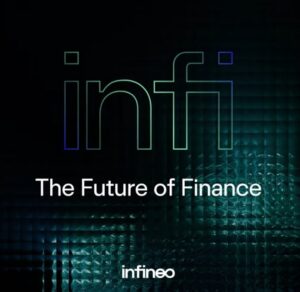
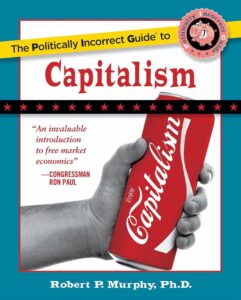
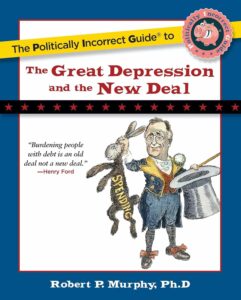
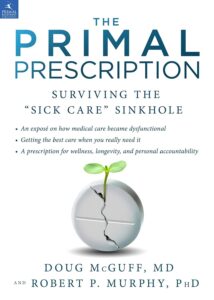


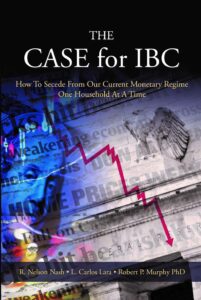
Recent Comments